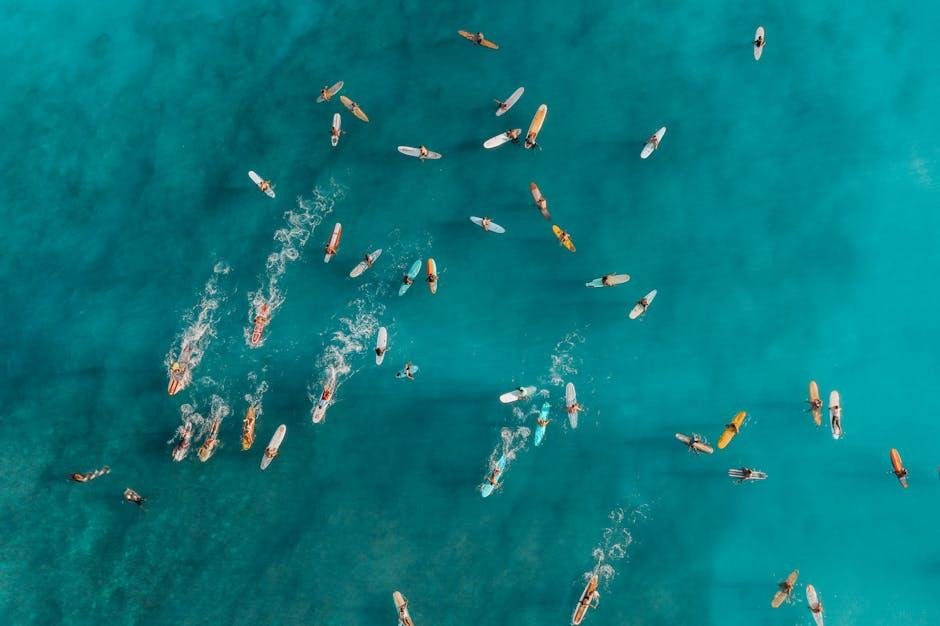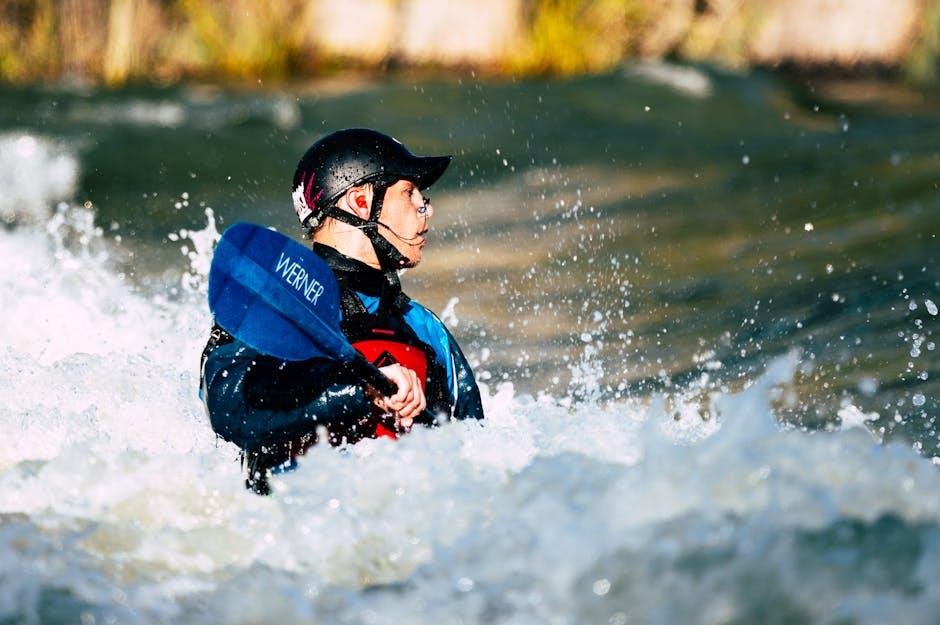navigating the Waters of Togetherness: The Art of Group Paddling Etiquette and communication
As sunlight dances on the water’s surface and the gentle sounds of paddles slice through the serene ripples, group paddling emerges as more than just a recreational activity—it’s an experience steeped in camaraderie and shared adventure.However, like any collective journey, the key to a harmonious outing lies not just in physical synchronicity but also in the unspoken language of communication and the subtle art of etiquette. Whether you’re gliding through tranquil lakes or tackling the thrilling challenges of river rapids, understanding the dynamics of group paddling can elevate the experience from ordinary to extraordinary. In this article, we will explore the essential principles of etiquette and the vital communication strategies that ensure every paddler can navigate the waters comfortably and joyfully, fostering a spirit of teamwork and respect along the way.join us as we dive into the nuances of paddling together, where every stroke counts and every voice matters.
Understanding Group Dynamics in Paddling Activities
Engaging in group paddling activities is as much about communication as it is about movement through water. To foster a smooth and enjoyable experience,participants should be aware of the power dynamics and interpersonal relationships that emerge during thes collaborative trips.Understanding roles within the group, whether it be the leader, navigator, or motivator, can enhance both safety and camaraderie. Clear, respectful communication plays a crucial role, encouraging paddlers to voice concerns, share experiences, and build a supportive atmosphere.Key aspects of group communication include:
- Active Listening: Give your full attention to others to ensure everyone feels valued.
- Positive Reinforcement: Encourage fellow paddlers wiht compliments and constructive feedback.
- Non-Verbal Cues: Utilize gestures and expressions to communicate effectively, especially in loud environments.
Moreover, adaptability is vital as different personalities and paddling skills come together. Recognizing and accommodating various styles of paddling not only enhances the group’s efficiency but also fosters mutual respect among members.Creating a set of shared guidelines prior to embarking on the trip can further solidify the group’s dynamics. Consider documenting these practices in a simple format:
| Guideline | Description |
|---|---|
| Stay together | Maintain a cohesive formation to facilitate easier communication and ensure safety. |
| rotate tasks | Share responsibilities like navigation or leading to promote inclusivity. |
| Check-ins | Regularly pause to assess comfort levels and discuss any challenges. |

Essential Communication Techniques for Seamless Coordination
Effective communication is the cornerstone of a prosperous group paddling experience. To ensure that every participant contributes to a harmonious workflow, establishing clear verbal cues is essential. Here are some key techniques to enhance coordination on the water:
- Synchronization Commands: Use phrases like “Paddle forward,” “Stop,” or “Turn left” to unite efforts.
- Visual Signals: Agree on hand signals for silent communication, which can be particularly useful in noisy environments.
- Check-Ins: regularly pause to discuss progress, address any concerns, and ensure that all members feel included and valued.
Additionally, fostering an surroundings of trust and respect among paddlers substantially boosts team cohesion. Encourage open dialog and consider implementing a feedback system to allow participants to express their thoughts on the dynamics of the group. Here’s a simple table to guide feedback sessions:
| Feedback Topic | Purpose |
|---|---|
| Communication Clarity | Assess how well commands are understood. |
| Paddling Technique | Share tips for improving efficiency. |
| Group Dynamics | Evaluate the overall team synergy. |

Navigating Challenges: Conflict Resolution on the Water
Engaging in group paddling can bring about challenges, especially when personalities and paddling styles collide. Effective communication is key to mitigating conflicts and ensuring a harmonious outing on the water. Establishing clear guidelines before embarking on a trip can set the tone for mutual respect and cooperation. discuss aspects like pace, turns, and signals, ensuring every participant understands their role and the collective goals. Regular check-ins during the journey can also help in addressing any brewing tensions, allowing paddlers to recalibrate their approach and maintain group cohesion.
When facing a disagreement, it’s essential to keep emotions in check. Instead of raising voices or pointing fingers, consider employing a few foundational conflict resolution techniques that prioritize teamwork and understanding. Here are some strategies to consider:
- Listen Actively: Acknowledge everyone’s perspective without interrupting.
- Stay Calm: Maintain a level head; emotional reactions can escalate situations.
- Propose Solutions: Encourage collaborative brainstorming to find compromises.
- Agree to Disagree: Sometimes,it’s best to respect differing opinions and move on.

Safety First: Establishing Guidelines for a Secure Paddling Experience
When embarking on a group paddling adventure, establishing safety guidelines is paramount to ensure everyone can enjoy the experience without fear or anxiety. Each participant should receive a thorough briefing on the essential safety protocols before heading onto the water. Consider implementing the following practices:
- Life Jackets: Ensure everyone wears a properly fitting life jacket at all times.
- Buddy System: Pair up paddlers to keep an eye on each other and offer assistance when needed.
- Communication Signals: Agree on hand signals or vocal commands to relay significant information, such as stops or hazards.
- Weather Awareness: Check forecasts and be prepared to alter plans if conditions worsen.
Along with safety protocols, establishing a clear line of communication can significantly enhance the group’s experience on the water. Ensure all paddlers understand the importance of staying together as a cohesive unit. Here’s a simple framework to facilitate effective communication:
| Situation | Action |
|---|---|
| Need to stop | raise your paddle and call out “STOP!” |
| hazard ahead | Point towards the obstacle and shout “HAZARD!” |
| Change direction | Signal with your paddle and verbally communicate “LEFT” or “RIGHT”. |
By fostering a secure atmosphere through clear guidelines and open communication, group paddlers can relish the beauty of nature while prioritizing their safety and enjoyment. Coordination and camaraderie on the water will lead to more memorable adventures for all involved.
Key Takeaways
As we navigate the waters of group paddling, the importance of etiquette and communication becomes as clear as the ripples on a calm lake.In the gentle rhythm of synchronized strokes, each paddler contributes to the harmony of the experience. By embracing the principles discussed, we can ensure that our time on the water is not only enjoyable but also respectful and safe for everyone involved.
As you venture out on your next paddling adventure, remember that the beauty of group dynamics lies in our ability to connect, listen, and respond to one another. Just as the currents guide our kayaks,let thoughtful communication steer our interactions,creating a harmonious journey for all. So gather your paddles, share a smile, and set out into the open waters with confidence—because when we paddle together, we create a tapestry of experiences that enriches our love for adventure and camaraderie. Happy paddling!
